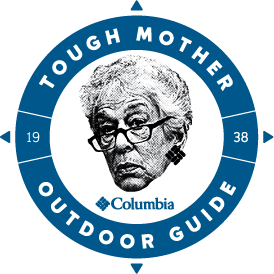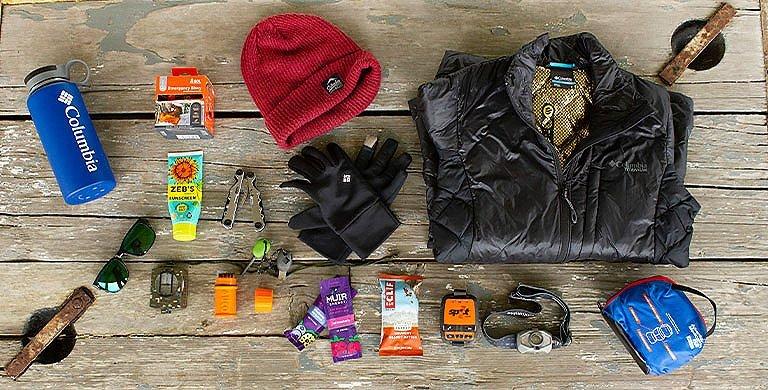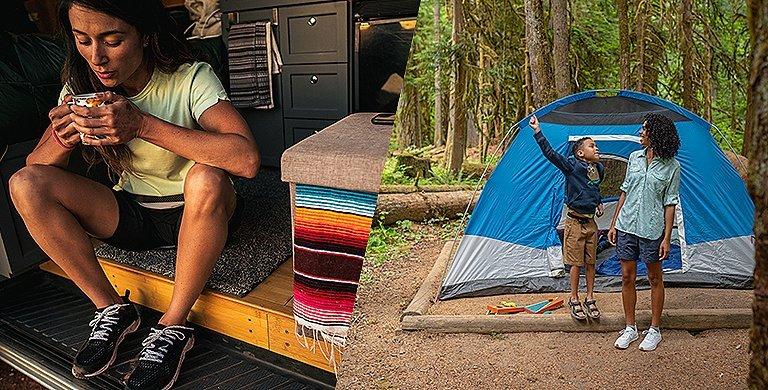CAMPING
Thunder and Lightning Safety for Camping and Hiking
In part 3 of Columbia's thunder and lightning series learn how to stay safe during a thunderstorm while you are camping or on the trail.
BY: NANCY BOUCHARD
We all spend time outdoors, and chances are, most of us have been out during a thunderstorm. But would that have been the case had we known the risks? Since 2006, 62 percent of lightning fatalities (roughly 300 out of the 488 total deaths (that the National Lightning Safety Council has been able to track) occurred during leisure activities. The National Weather Service emphasizes that “there is no safe place outside during a thunderstorm.” And while there may be nothing you can do to significantly lower your risk if you are stuck outdoors, there are things you should avoid that actually increase your risk of being struck.
We spoke with John Jensenius, a lightning safety expert, to find out more about lightning and the risks to hikers and campers.
We spoke with John Jensenius, a lightning safety expert, to find out more about lightning and the risks to hikers and campers.
Q. How dangerous is it to be outdoors in a thunderstorm?
A. Outdoor leisure activities (camping, hiking, walking, biking, and group gatherings) make up more than 30 percent of lightning fatalities. Mountains and trees can block your view of developing thunderstorms. And, if there’s a lot of background noise, like a river (or an open-air concert), chances are lower you’ll hear thunder. From 2006 to 2023, there were 23 camping deaths and 12 hiking deaths attributed to lightning.
Q. If you are camping, do you stay in your tent if there’s a lightning storm?
A. For many campers, a nearby vehicle is the only good option. If you are on a multi-day outing where getting to a vehicle is impossible, set up your tent below tree line and away from the taller trees and away from the edges of any open areas or lakes. Lightning spreads out along the ground surface, so lying down should be avoided.
Q. If you are outdoors and there's a shelter (like an open-sided picnic awning or bus stop) is that a good place to take refuge?
A. An open shelter does not provide any protection from lightning. Houses provide protection from lightning because they contain both wiring and plumbing. Any structure that does not provide adequately grounded overhead wiring or plumbing does not offer protection from lightning. Shelters that are in open areas or near tall trees, outcroppings, or lakeshores are particularly dangerous as they are more vulnerable to lightning strikes.
Q. Is the old rule of thumb of counting lightning distance (one thousand, two one thousand, etc. valid?
A. In most cases, lightning can be heard for a distance of about 10 miles. Lightning can strike outward from a thunderstorm for 10 miles (and sometimes more). If you hear thunder (even a distant rumble), you are likely within striking distance of the storm and need to get to a safe place immediately. It doesn’t matter which way the storm is moving. Sound travels at about 1100 feet per second so it takes about 5 seconds to travel a mile. If the time between the lightning and the thunder is 20 seconds, that particular flash was only 4 miles away. Keep in mind that counting only tells you how far away the previous flash was and not where the next flash will be. Especially in mountainous areas, the sky overhead may be clear, but if you hear thunder, you’re likely within striking distance of the storm.
Q. Why is it a good idea to spread out if you are with a group of people?
A. If you are with a group, spread out. While this increases the chance that someone might get struck, it lowers the chance of a multi-casualty incident and increases the chance that someone could provide lifesaving first aid and/or go for help.
Q. Why are there so many camping fatalities?
A. In many cases, the victims were only steps away from a vehicle that could have provided safety. In some of these cases, skies may have been obscured by mountains or trees, and the victims just didn't realize a storm was nearby. In other cases, though, the threat was likely ignored. In a few cases where the fatal incident was in a remote area far from a safe place, there may have been little or nothing the victim could do at that time to be safe. In these cases, canceling or postponing the activity may have been the only course of action that would have provided safety. In some cases, people decided to wait to see if the conditions improved rather than heading toward safety immediately. It's important to note that some activities require a considerable amount of time to get to a safe place
In situations where you are caught outside and absolutely cannot get to a safe place, here are tips provided by Jensenius and The National Weather Service to slightly lower the risk of being struck.
- Avoid open areas.
- Don't be or be near the tallest objects in the area.
- Don't shelter under tall or isolated trees.
- In the woods, put as much distance between you and any tree.
- If in a group, spread out so that you increase the chances for survivors who come to the aid of any victims from a lightning strike.
For more information on how to stay safe during electrical storms, check out these additional articles in Columbia's thunder and lightning safety series.
Rain or shine, equip yourself with the right Columbia outerwear and hiking gear for your next camping or hiking trip.



